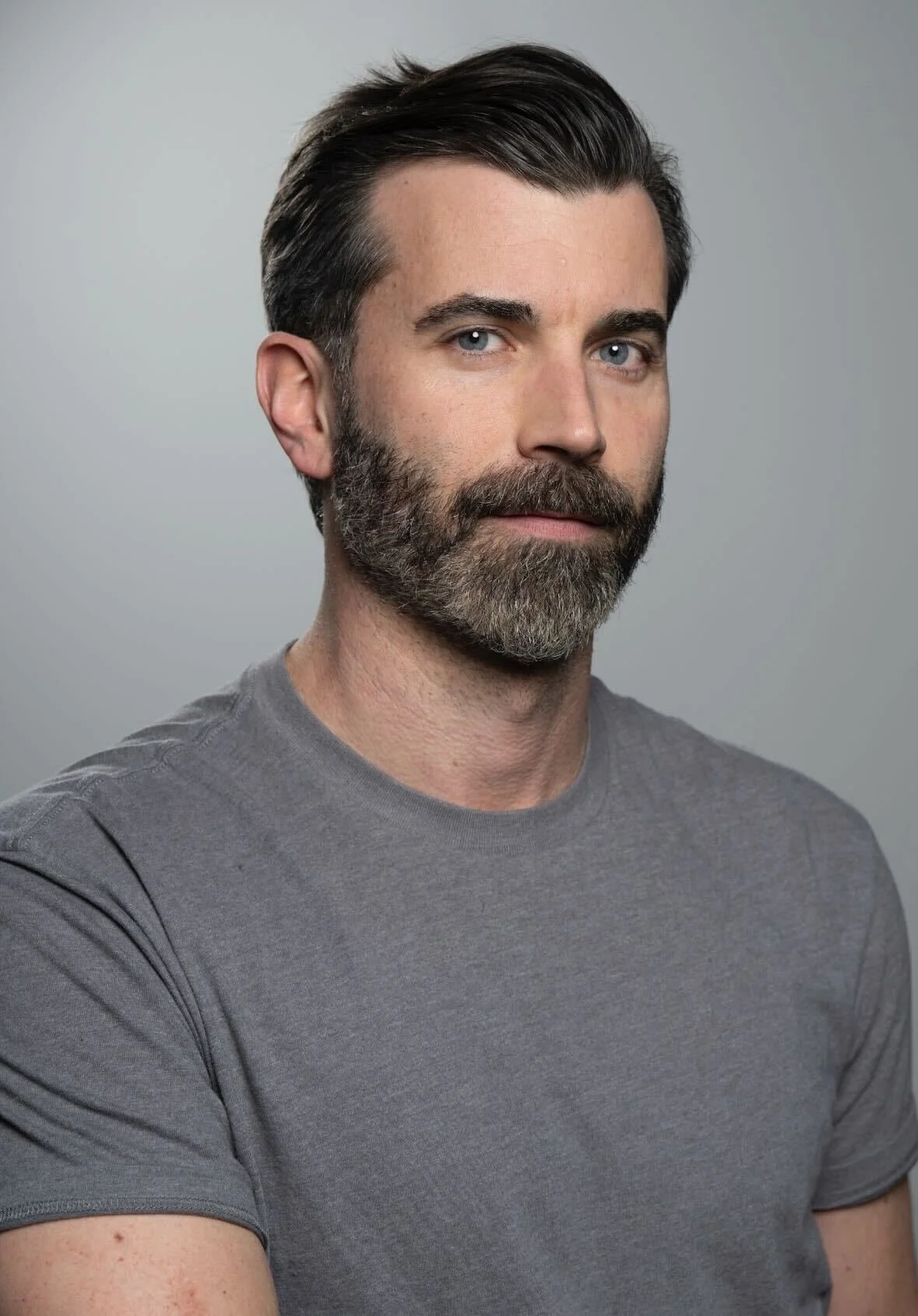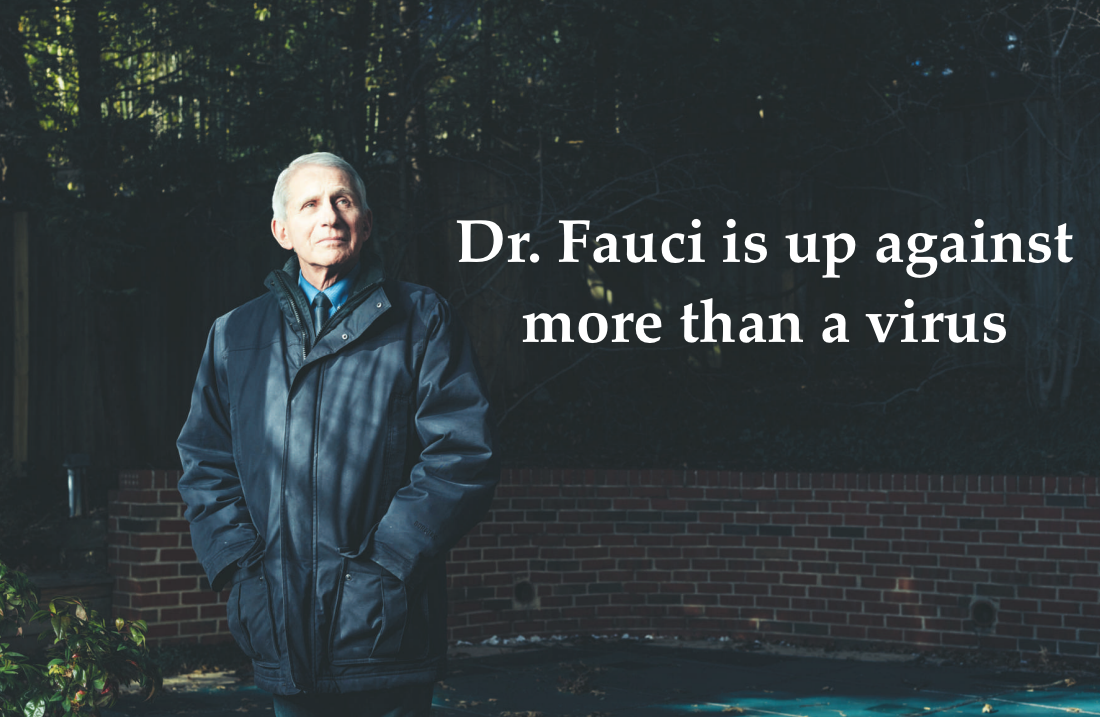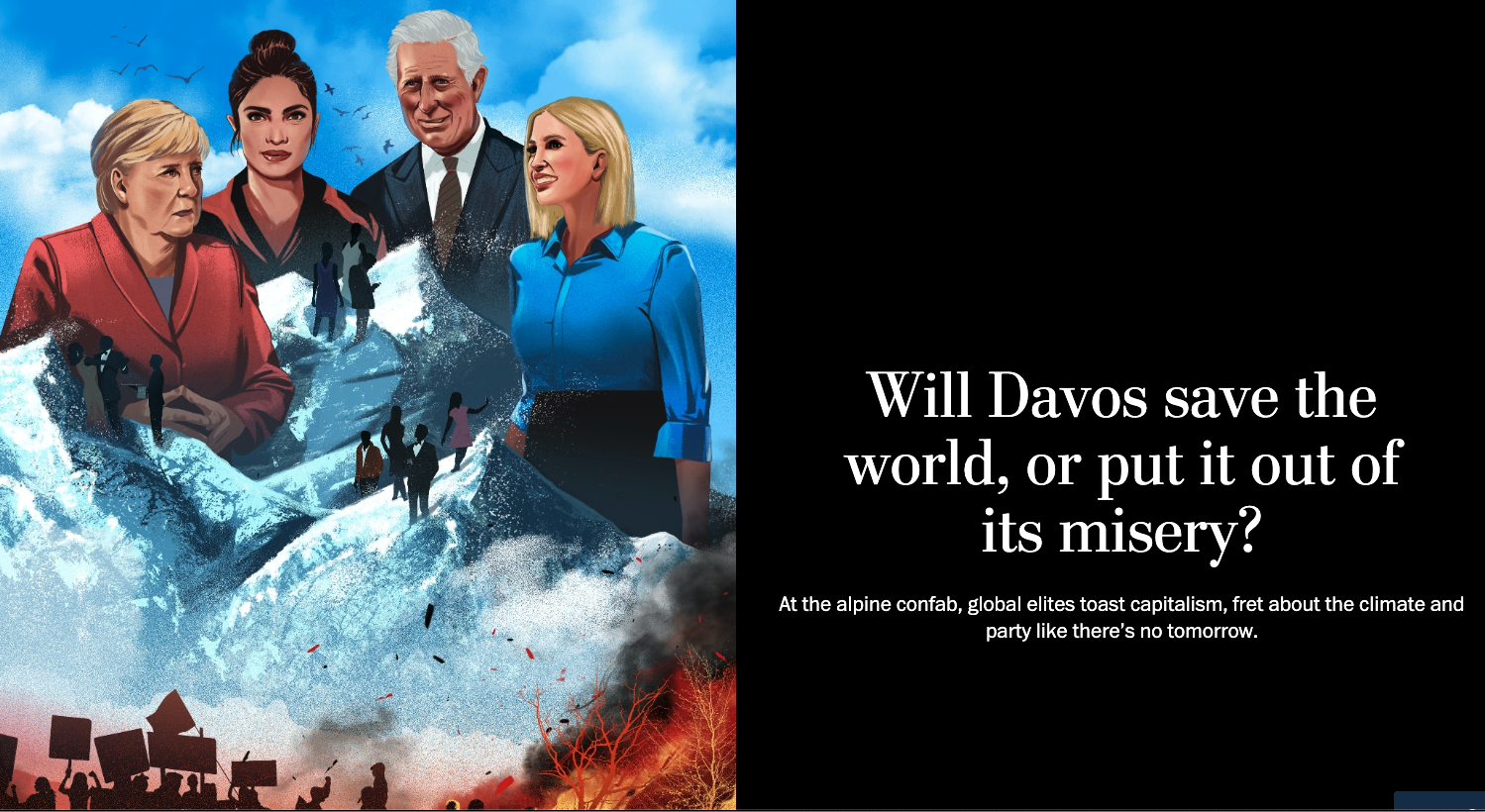I’m a journalist and senior editor at The Atlantic. Hello. For 20 years prior, I was a reporter and then editor for The Washington Post.
For a little buffet of my work at The Post, scroll past this bio. I covered a variety of stories while on local, national and foreign assignments: from the Oscars to the UN climate conference, from Davos to Fallujah, from Anthony Fauci to Parker Posey, from Iowa during caucus season to Alaska during a jungle primary to Paris during the Summer Olympics.
To capture what it feels like to be alive right now, I wrote a series of stories on climate change. I’ve also chronicled life in the Trump Era, and life in the covid era.
Favorite edits at The Post include profiles of drag queen Sasha Velour, comedian Nate Bargatze and First Lady Jill Biden, at the end of her husband’s presidency.
I wrote a nonfiction book titled “Almighty,” based on this Post story, about anti-nuclear activists who broke into a weapons site nicknamed “the Fort Knox of Uranium.” The New York Times called it a “strangely captivating book — dark and utterly frightening.” It’s a great beach read.
As a grantee for the Pulitzer Center on Crisis Reporting, I produced a series of articles on the nuclear history of — and environmental peril in — the Republic of the Marshall Islands.
My favorite reporting experiences at The Post? “The Polaroids of the Cowboy Poet,” about the Joe Gould of Washington, D.C. Also, “After the Blast,” about the decimation and resurrection of the town of West, Texas. And “The Hero,” about a combat vet who helped disarm a mass shooter in Colorado Springs.
I’m originally from Buffalo, N.Y. My literary agent is Lauren Sharp at Aevitas Creative Management. The photo of me on this page is by Marvin Joseph. My older stories are accessible through the menu up top. I can’t believe you’ve read this far!
My last big story for The Post was published March 16, 2024:
…why is Porter trailed by this cloud of “bad boss” insinuation — and should it matter at all? How can leadership be properly judged in a world built with double standards, and wired with infinite triggers and sensitivities? What is the price of surviving and thriving in politics?
No question: The Hill is a harsh place to work and to lead. No one knows this better than Katie Porter.
Ben stayed. Jami left.
“I have some cognitive dissonance with the decision I made,” says Ben.
“We just grabbed the baby,” says Jami. “And took off.”
Their choices had to do with the creek. It meanders, from the site of the train derailment, through the heart of town. Past the copper fabrication plant and the Fraternal Order of Eagles, directly under the bakery and the mayor’s office, toward the park, where the tennis league is supposed to start at the end of the month.
Jami Cozza’s ground-floor apartment is seven paces from the creek, on the south side of the railroad tracks.
Ben Ratner’s three-story house is on the north side of the tracks, uphill a bit, which means the creek, named Sulphur Run, isn’t potentially leaching hazardous chemicals into his basement, with all those bags of T-ball and soccer gear.
Read:
The Jan. 6th hearings: Was the finale just the beginning?
Since June, there has been drama but no climax. There have been revelations but no catharsis. “We don’t know where we are in the Donald Trump story,” says author and historian Garrett Graff, who has researched and written about Watergate and 9/11. “We don’t know yet whether the January 6th committee will be seen as a turning point in our national history, or a warning that went ignored.”
We do know what the hearings have tried to tell us in precise, persistent fashion: that Donald Trump, his partners and his acolytes — through both chaos and coordination — attempted to subvert American democracy, that they failed because the right people upheld their oaths at the right moments, but that they otherwise succeeded in deluding minds, sacking the Capitol and halting the peaceful transfer of power for the first time in U.S. history. They wrecked lives and careers of public service. They flushed the nation into a vortex of pain, paranoia and vengeance that may lead, barring intervention and reform, to the deterioration of the republic. Read more.
Rep. Don Young’s death not only forced Alaska into an administrative emergency with its elections system, but also cracked the coalition of voters that had kept him in office to seduce and battle the federal government: the camps of pipeline workers, the anti-tax Democrats and pro-union Republicans and crude-friendly independents, the Yup’ik Natives out west and the Inupiats on the North Slope, the pothead gold miners in the Interior, the swashbuckling ice cutters at sea, the military vets who fled trauma for wilderness, the belly slitters on the slime lines in the Kenai Peninsula, the overworked and underpaid schoolteachers in Anchorage and Juneau, all the sundry tradesmen and artists and Teamsters and missionaries and suburban mama bears and leave-me-aloners scuttling on and off the grid in gorgeous, dangerous, “KEEP OUT” America…
Read:
He knows how a virus works. He knows how Washington works. He thought he knew how people worked, too — even ones who called him a murderer, as AIDS activists did decades ago because they felt left for dead by a neglectful government. Back then the angry people were motivated by truth and science. Fauci had something to learn from them, and they had something to learn from him. The shared mission was pursuing facts and saving lives. Fear and uncertainty could be eased by data and collaboration. Combatants, however scared or passionate, shared a reality.
Now?
“There is no truth,” Fauci says, for effect. “There is no fact.”
Read:
On Wednesday, during its season finale, the Donald Trump Show finally leaped off the screen and into the laps of the people in power. The finale started with Republicans in Congress debasing themselves to soothe the wounded ego of the main character, the man who is vandalizing their party and their legacies, the man whose family is prolonging a grift disguised as a chintzy brand of fascism that many people are taking very, very seriously — so seriously, in fact, that an army of delusional insurrectionists sacked the U.S. Capitol as legislators were engaging peacefully, if disagreeably, in the transfer of presidential power.
It was a day of profound national humiliation, and it had been coming for a while.
Read:
You can’t see Lorne Michaels behind the army of cast and crew, but you can hear him, buffing the show in the free fall between dress rehearsal and air. Studio 8H, his claustrophobic kingdom, is all wires and wigs and wheels and lumber, craftsmanship and ego, raw nerves and unresolved daddy issues. The actor Oscar Isaac, a surprise guest, is tucked with his script in a cubby near the prosthetics room, with its small pile of Biden flesh. Scooching through the tight hallway is Donna Richards, dresser for the hosts, who’s been with the show 28 seasons. “He doesn’t miss a trick,” she says of the “most loyal boss.” Around a few corners is Wally Feresten, the cue-card guy of 32 seasons, with last-minute edits to the cold-open sketch and a damp, stamp-size sponge hanging from his glasses. “I can’t lick my finger,” he says, tapping the sponge. “Lorne forbids it.”
Read:
Something spooky has been happening here in Maricopa County. Weird spooky, crazy spooky, this-has-never-happened-before-in-America spooky.
“We’re in uncharted waters,” says Tammy Patrick, a former Maricopa elections official.
“It’s a clown-car farce,” says Terry Goddard, a former Democratic attorney general of Arizona.
“It’s unacceptable,” says Grant Woods, a former Republican attorney general who has since become a Democrat. “I think it should stop.”
“All you have left now is the crazies leading the crazies,” says Democratic state Sen. Rebecca Rios. “It is mind-boggling and frightening that it has gone this far.”
Read:
The father, the son, and the holy Cuomo mess
Andrew M. Cuomo has been hustling all his life, up glorious summits and through choppy seas, in the pursuit of control. He hustled as a kid from Queens with his own landscaping business (motto: “We clip you good”) and as an adolescent fixing $300 cars and flipping them for $1,500. As a 24-year-old fresh out of law school, he snookered Ed Koch’s nominating delegates to give his father, Mario M. Cuomo, an edge on the Democratic nomination for governor. (Long story, but it involved a party boat on Onondaga Lake followed by some roll-call jujitsu at the convention.) As a housing advocate, he battled NIMBYs in Westchester and built shelters on the edge of Brooklyn; meanwhile, he married into the Kennedys and befriended the Clintons. At 39, he became a visionary Cabinet secretary who made his inspector general’s life miserable, then watched his life collapse around a clumsy first bid for his father’s office and a divorce that was splayed across the tabloids — only to claw his way back a few years later to become New York’s attorney general and then governor. In his third term, he sang pandemic lullabies to a panicked public that lusted after calm leadership but got, in the end, the same hustle and control that Andrew Cuomo has been practicing for 40 years.
Read:
Goodbye to Gate 35X
Let’s get right to it: It was a bus station. A bus station in an airport. It was two places you’d rather not be, melded into one place.
There was no flourish to its badness. Gate 35X at Reagan National Airport did not have the utilitarian exotica of the Dulles people-movers, trundling across a tarmac Tatooine. It did not have the high-low smack of Union Station, where travelers are welcomed by the Roman arches of Constantine but digested through a boarding area that feels like the waiting room of an ER. Gate 35X wasn’t a vortex like the Springfield Interchange, or a labyrinth like the Metro station at L’Enfant Plaza. Gate 35X didn’t qualify as a municipal quirk, like Washington’s lack of a J Street. Gate 35X was just a bus station. In an airport.
Except, somehow, it was more than that.
Read:
The final 24 hours of the presidency of Donald J. Trump, in bookends: At noon Tuesday, in a muted pageant of utter competency, Joe Biden’s nominees began to submit themselves for Senate confirmation. And just before noon the following day, outgoing Vice President Mike Pence, in the shadow of his defeat, watched the clouds part so that Lady Gaga could sing the national anthem into a gold microphone bathed in sunshine.
Read:
What does Josh Hawley think he’s doing?
This is what some people have been afraid of: that Trumpism will not flame out, that it will instead change shape, that it will acquire perfect chestnut hair and blue suits that fit, that it will trade seething mania for intellectual finesse, that it will blather not about strong walls and weak toilets but about cosmopolitan hegemony, that it will not obsess over stolen elections and evil Democrats but instead lodge procedural complaints that sow doubt about the legitimacy of Democratic victories. And so on Jan. 6, Sen. Josh Hawley (R-Mo.) objected to the electoral vote count in the name of The People, about eight hours after The People laid siege to his workplace.
Read:
Iowa is a fairy tale. Somewhere between the crumbling bridges, the meth clinics, the jackknifed tractor trailers, the zombie combines steered by satellite, the putrid purgatories for dinner-bound hogs — somewhere among the wannabe novelists and suicidal farmers and drooling cage fighters sponsored by bargain hotel chains, down rutted byways to giant wind turbines, alongside ditches oozing with nitrates and Busch Light — is a loose menagerie of utopia, where Americans are pleasant, responsible and cooperative, where they pass down their civic duty like a trust fund, where they still have one hand in the fallowing topsoil, the other locked in fellowship with their neighbor, and their eyes on the future of the republic.
This frontage road of a state, this frozen slab of soybean fields and carpenter gothic, has threshed the Democratic presidential candidates for a year now, and it will make the first winnowing of the field Monday, when about 0.1 percent of the country’s registered voters — after being harassed by campaigns and spoiled with millions of dollars — could set the course for the rest of our lives.
Read:
When this hot planet finally begins to evict us en masse, the global elites might seek refuge up here in the Alps, in the highest town in Europe — if only out of habit. They’re here at this time every year, to negotiate and network and divide up the exciting business of solving the world’s problems. This week was the 50th meeting of the World Economic Forum. The themes were cohesion and sustainability, though humanity seems capable of neither right now. See the mega-fires in Australia. See the situation with Iran, whose foreign minister scrapped his attendance here at the last minute. See the United Kingdom leaving the European Union, or Prince Harry leaving the United Kingdom. See the world leaders and billionaires park their jets in Zurich and then float into Davos on helicopters to watch the leader of the free world make misleading boasts about the U.S. economy as the Senate tries him back home on an abuse-of-power charge.
Read:
The decade has ended but it will never be over
Being alive in the 2010s meant seeing what America wants to be, and feeling what it actually is. It meant feeling a bit of uplift while on a downward slide. Our self-diagnosis was “late-stage capitalism.” It explained our wanton ennui. It explained why Dr Pepper dangled $100,000 tuition checks during halftime competitions at college football games. It explained why families in Congo are suing five American tech companies for injuries endured by children mining for materials that end up in our phone batteries. It explained why Amazon stationed ambulances at one of its stifling warehouses as its employees worked themselves into unconsciousness.
You smell it, or think you do. Like a bonfire on a beach. Then you see it in your headlights. Ash. Or maybe insects? The signs are coy at first, on the westbound 118 Freeway, cleaving through sandstone crags that are 70 million years old. The thunderhead of smoke, a purple lesion on the orange twilight, is mysterious but not alarming. But you round a bend near the Santa Susana Pass and the fire is suddenly before you: ruby-red ribbons of flame coiled around dark hills of sagebrush and sumac, accented by the snaking brake lights of Simi Valley traffic. It is unnatural and natural, simultaneously.
Read:
Fear and gloating in Cincinnati
Oh, people had fun here! They were gleeful. They chanted “LOCK HER UP,” and turned to each other and smiled, moving and clapping as if they were at a Lynyrd Skynyrd concert. (“Free Bird” had played multiple times outside the arena to entertain the epic queue in the hot sun.) Pubescent boys wearing the Infowars logo, soccer moms in pink tops emblazoned with “Women for Trump,” a couple of rows of black supporters with T-shirts that said “TRUMP & Republicans ARE NOT RACIST,” a group of friends from Middletown (setting of the memoir “Hillbilly Elegy”) who’d chartered a limousine to make a night of it — they were so happy to spend hours here, in this hot hockey venue across the river from Kentucky, as the leader of the free world gave a sermon of digressive demagoguery and tell-it-like-it-isms. The president wasn’t racist, his people believed; he was an equal-opportunity counterpuncher. Some said they weren’t even here for the counterpunching. They were here for the sheer camaraderie, the energy, the excitement. It was validating for people. It was inspiring.
‘Everything is not going to be okay’
Climate change is more sly than time-lapse video of a disintegrating glacier. It’s the creep of bay water into ditches, and then onto roads.
It’s a smell. A nuisance. A crinkling of the calendar.
In the soybeans fields of Carrington, N.D., the first frost is scooching from Labor Day toward October, while the last frost is backing out of May into April. Charles Linderman has watched it happen over his 43 years of farming there. A longer growing season, right now, is good. “My concern,” Linderman says, “is if it keeps going this way.” Cool-season crops such as barley would suffer; milder winters might spare certain pests. North Dakota could start to feel more like Kansas.
Read: How to live with constant reminders that the Earth is in trouble
The story of Washington’s weirdest traffic circle
Take any side of it and plot the agony: The desperate dashed curve across six lanes of New York (Jesus take the wheel!); the pummeled yellow pylons on First, a memorial to driver perplexity. If you want to stay on Florida eastbound, you must make three turns (good luck finding the lane you need) and endure three signals. All to stay on the street you wanted to stay on.
Violence. Threats. Begging.
Harvey Weinstein’s 30-year pattern of abuse in Hollywood.
In 1984, Harvey Weinstein was 32 years old and making one of his first real feature films, on location outside of Scranton, Pa. It was a comedy called “Playing for Keeps,” featuring a not-yet-famous Marisa Tomei, and the mood on set was anxious. Weinstein was foul-mouthed and domineering. He sparred routinely with his younger brother, Bob, his co-director. At one point, they wanted to shoot two versions of each scene because neither would compromise his vision.
One day, a young female crew member came to the office of lead producer Alan Brewer, an old high school friend of Harvey’s from Queens, and started crying.
Read: Harvey Weinstein’s 30-year pattern of abuse in Hollywood
After the Blast
A small town in Texas. A huge explosion. An unsolved mystery. And the forces that pulled it all back together.
Two American cities were wracked by explosions during the third week of April 2013. West, Texas, is the one you didn’t pay as much attention to.
On April 15, a small but vicious pair of pressure-cooker bombs ripped through the finish-line crowd at the Boston Marathon, killing three and injuring 264. There were obvious villains and emerging heroes, and the subsequent manhunt transfixed the nation. “Boston Strong” became a national mantra.
West was a far larger event, though the circumstances were murkier. The April 17 explosion was roughly five times the size of the blast of the 1995 Oklahoma City bombing, which was also generated by ammonium nitrate. It injured almost 10 percent of West’s population, registered as a magnitude-2.1 tremor and flung debris as far as 2½ miles away. It was as if a twister had come through town carrying an atomic bomb.
Read:
The Polaroids of the Cowboy Poet
Chris Earnshaw is an odd and brilliant and sloppy man who vibrates with great joy and grand melancholy. For decades he has ambled through bandstands, major motion pictures and demolition sites, searching for prestige and permanence, all while being ignored on the gray streets of a humdrum capital.
“You know, I believe in the inevitability of the spirit,” he says. “I’ve heard about people gripping the rails of their deathbed, thinking the void awaits them. But that can’t be it, can it? There must be something next, something beyond, for all of us. I don’t want my life to end with people not knowing, or people saying, ‘He could’ve been something.’”
So several years ago, he put rubber bands around some of his photographs.



















